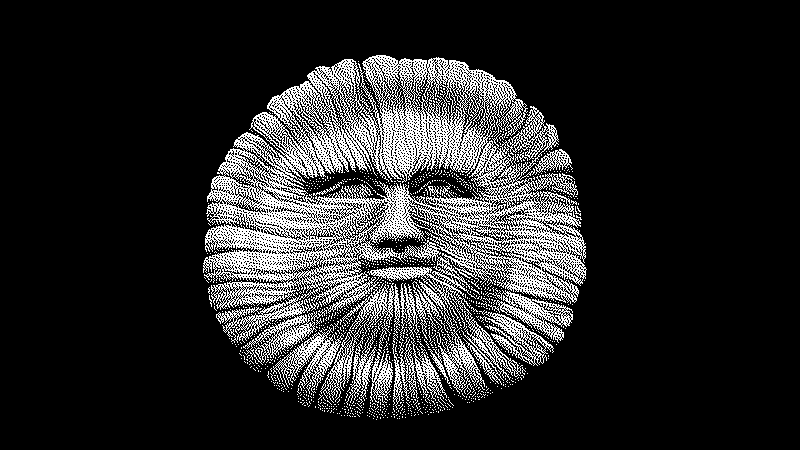
Table of contents
Folk Horror refers to a mode of story-telling, a set of themes and to some extent an aesthetic movement fascinated by exploring the ways in which old rites, traditions and folklore can embed itself in the land and places, it digs for the ways in which humans over thousands of generations have imprinted the landscape and also how the landscape leave impressions on the human psyche.
“Hail Behemoth spirit of the dark. Take thou my blood, my flesh, my skin and walk. Holy Behemoth father of my life speak now, come now, rise now from the forest, from the furrow, from the fields and live!”
- from Blood on Satan’s Claw
It initially arose from the tension between modern life and the old ways, between the city and the countryside. Folk Horror plays with our yearning for nature and a return to the land and ideas of pastoral life while at the same time shining a light on the more dreadful side of rural living with its superstitions, repression, cults and real or metaphorical sacrifices.
god is dead, the old gods are back
By going back to the countryside and reconnecting with the old ways, folk horror unearths the bloody and traumatic history that lies buried in many places in the world, hidden behind a facade of civility and modernity. It also uses the stage of the rural village with its inhabitants meeting an outsider coming from the progressive and wealthy city to address class and culture tensions that are still very relevant today.
Folk Horror in movies and television
There is a very long list of movies and television shows using the mode and themes of folk-horror. In fact, in this new revival of folk horror it seems that cinema is the main media for which new stories are written and that contribute quite a lot for broadening the reach and scope of those stories. The unholy trinity of folk-horror films was strongly rooted in the British landscape, the new wave brings new horrors out of the soil through native American tales, ghost stories from Asia, legends from the Nordic country and more.
The Unholy Trinity
- The Wicker Man, Robin Hardy - 1973
- Blood on Satan’s Claw, Piers Haggard - 1971
- Witchfinder General, Michael Reeves - 1968
First Wave of British Folk Horror
- Children of the Stones (series), Peter Graham Scott - 1977
- Stigma, Lawrence Gordon Clark - 1977
- Penda’s Fen, Alan Clarke - 1974
- The Stalls of Barchester, Lawrence Gordon Clark - 1971
- The Owl Service, Peter Plummer - 1969-1970
- Robin Redbreast, James MacTaggart - 1970
- Whistle and I’ll come to you, Jonathan Miller - 1968
- Quartermass and the pit, Roy Ward Baker - 1967
Folk Horror Revival
- Woodlands Dark and Days Bewitched, Kier-La Janisse - 2021
- In the Earth, Ben Wheatley - 2021
- Midsommar, Ari Aster - 2019
- La Llorona, Jayro Bustamante - 2019
- Koko-di Koko-da, Johannes Nyholm - 2019
- SG̲aawaay Ḵ’uuna (The Edge of the Knife), Gwaai Edenshaw, Helen Haig-Brown - 2018
- The VVitch, Robert Eggers - 2015
- A Field in England, Ben Wheatley - 2013
Other notable movies
- The Lair of the White Worm, Ken Russel - 1988
- Wilczyca (the she-wolf), Marek Piestrak - 1983
- The Hungry Grass, Archie Reid - 1981
- VIY, Konstantin Ershov and Georgiy Kropachyov - 1967
- Shadows of Forgotten Ancestors, Sergei Parajanov - 1965
Folk Horror in music
Strangely, I first heard of the term folk horror used to describe music, since that first encounter I developed a fascination with everything related to this idea. The way it manifests in music is akin to how it does in film, through a variety of genres (from actual folk music to experimental electronics) but with a shared interest in some themes and aesthetics. Finding about Ghostbox records was another milestone in my exploration of musical folk horror, their curated collection feels like an extension of the early sonic explorations of the BBC radiophonic workshop and I would describe the music they release as the sound of hauntology .
- The Hare and the Moon
- The Devil and the Universe
- The Rowan Amber Mill
- A Year in the Country
- Ghostbox records
Folk Horror in literature
Fiction and tales
- Damnable Tales: A Folk Horror Anthology by Richard Wells
- The Fiends in the Furrows: An Anthology of Folk Horror by Steve Toase
- Casting the Runes by M. R. James
- Harvest Home by Thomas Tryon
- Randalls Round by Eleanor Scott
- Works by Nathaniel Hawthorne
Writing about folk horror
- Folk Horror: Hours Dreadful and Things Strange by Adam Scovell
- We Don’t Go Back by Howard David Ingham
Old anthropological texts
- The Golden Bough by James Fraser
- The Witch-Cult in Western Europe by Margaret Alice Murray